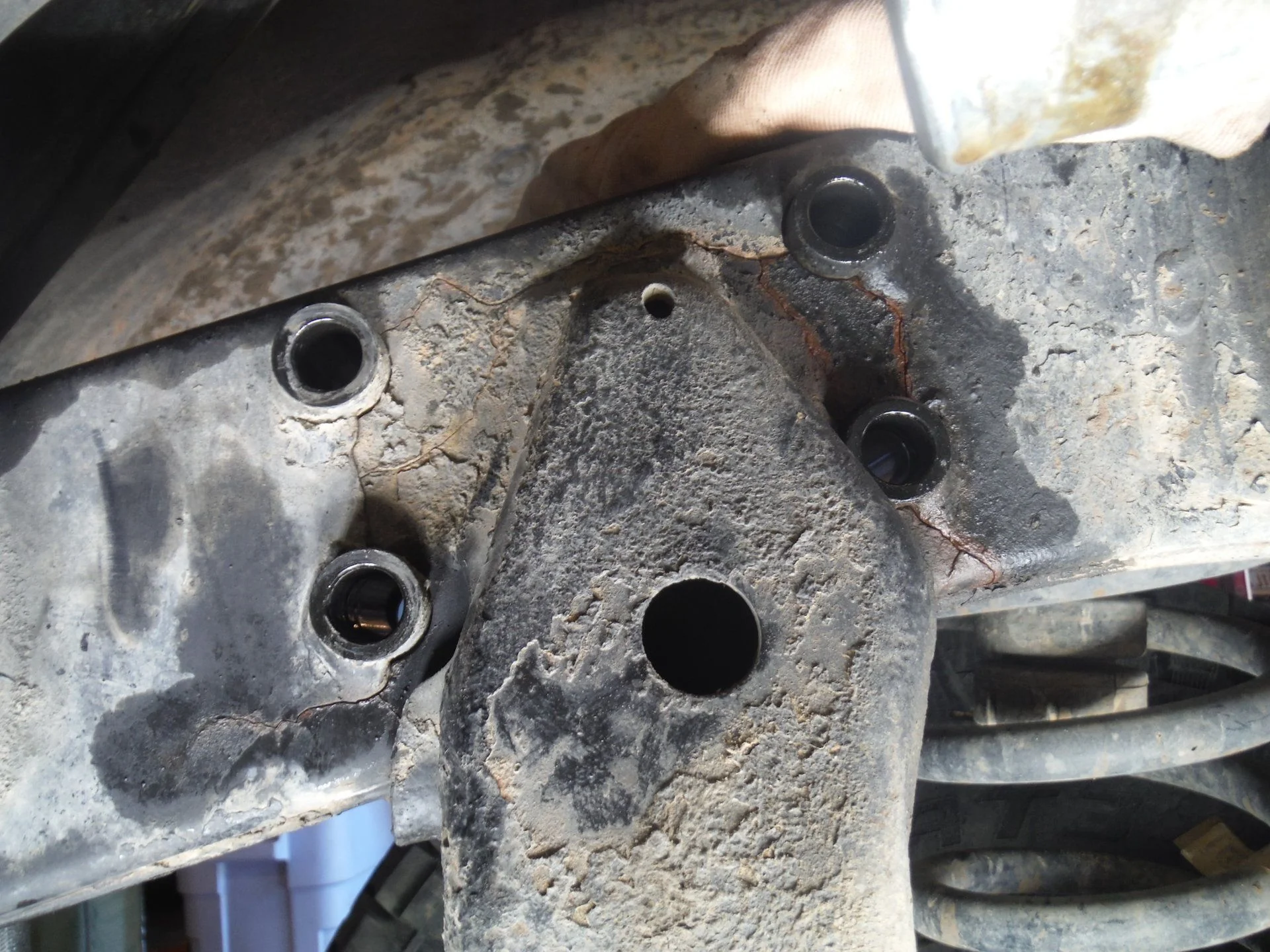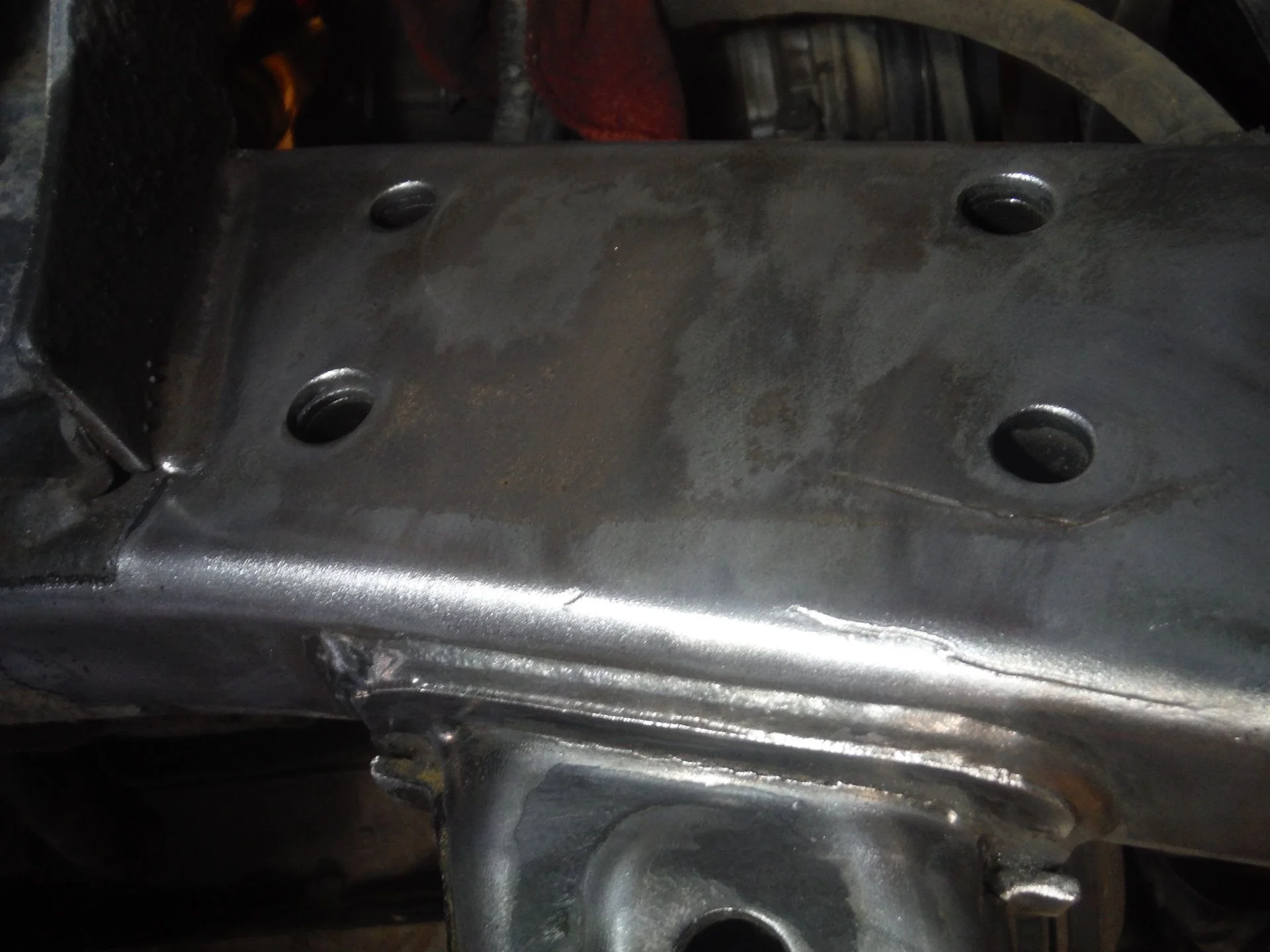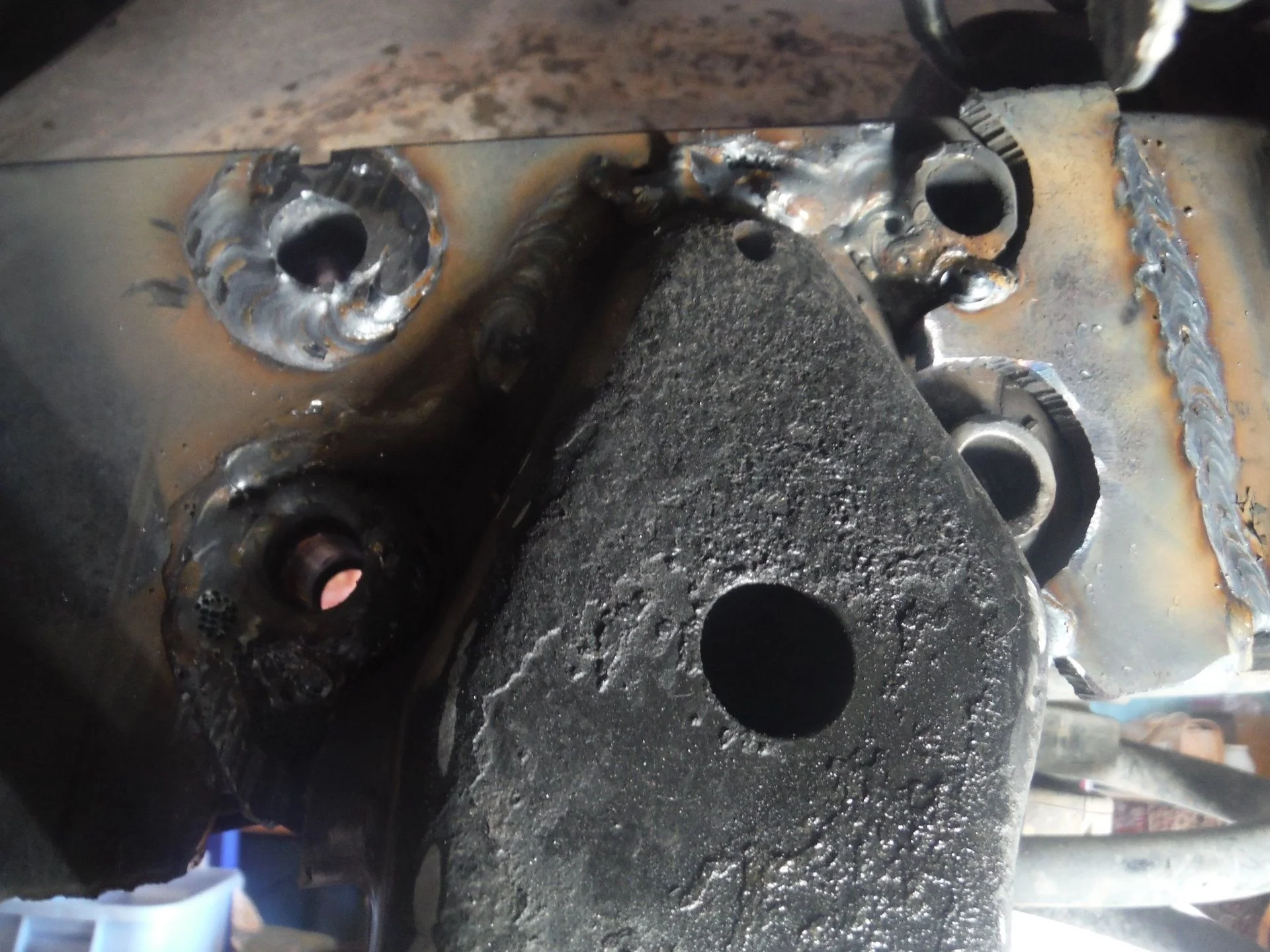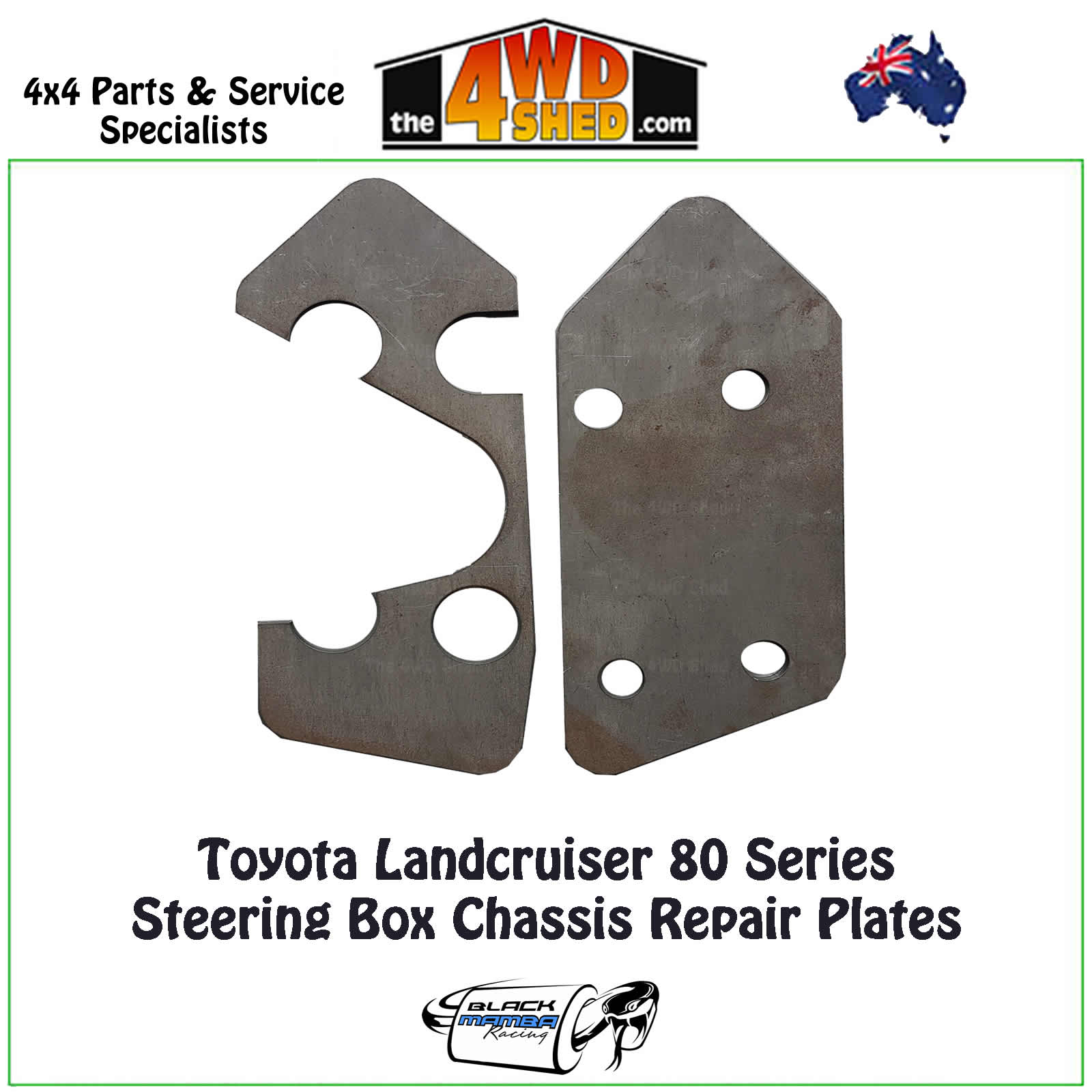I've been tracking down the source of my wobble, I've checked all the usual suspects a few times over but never looked closely at my frame. Well, it was cracked as all get-out:
There were two completely loose chunks of metal in the photo above, I could tap on them and hear them click!
The wheel/steering box side had a few cracks as well, including the entire bottom weld on the panhard tower to the frame:
What an awful, stupid design on Toyota's part. This absolutely should have reinforcement from the factory, there is a ton of stress concentrated right here!
Since I'm an engineer, I drew up some templates in my modeling software and iterated the design until I like the fit I was getting using paper cutouts. I cut out reinforcing plates from 1/4" steel because that's what I had on hand. I got everything down to bare metal using a wire wheel on my grinder then I plasma cut/filled/ground all the cracks I could easily reach (which unfortunately was not most of them).
Below is a link to my template files in PDF format. They were made for my RHD HDJ81 however I think they should work for LHD applications. Hopefully this saves someone some time in the future!
Dropbox - Frame Weld.PDF
Here are the 2 separate plates I made for the engine side being welded on (not really enough room to make one single piece):
...and here's the plate for the steering box/wheel side ready to weld on:
The finished product after being painted with 3M undercoat spray:
Unfortunately this did not cure my wobble. It's probably 30-50% better and it definitely changed the speed range but did not eliminate it entirely. It would have been nice to rib out the panhard tower to the frame better, but that's a bit complicated to do. However, the cracking on the engine side was certainly caused by this tower and my flat plates only do so much to shore up that area (it's difficult to get close in there due to the tower mount itself). I'm not sure if the remaining wobbling is caused by flex still happening in this area or not, I'm going down the road of troubleshooting other issues and will update this thread if/when I finally get the wobble solved.
There were two completely loose chunks of metal in the photo above, I could tap on them and hear them click!
The wheel/steering box side had a few cracks as well, including the entire bottom weld on the panhard tower to the frame:
What an awful, stupid design on Toyota's part. This absolutely should have reinforcement from the factory, there is a ton of stress concentrated right here!
Since I'm an engineer, I drew up some templates in my modeling software and iterated the design until I like the fit I was getting using paper cutouts. I cut out reinforcing plates from 1/4" steel because that's what I had on hand. I got everything down to bare metal using a wire wheel on my grinder then I plasma cut/filled/ground all the cracks I could easily reach (which unfortunately was not most of them).
Below is a link to my template files in PDF format. They were made for my RHD HDJ81 however I think they should work for LHD applications. Hopefully this saves someone some time in the future!
Dropbox - Frame Weld.PDF
Here are the 2 separate plates I made for the engine side being welded on (not really enough room to make one single piece):
...and here's the plate for the steering box/wheel side ready to weld on:
The finished product after being painted with 3M undercoat spray:
Unfortunately this did not cure my wobble. It's probably 30-50% better and it definitely changed the speed range but did not eliminate it entirely. It would have been nice to rib out the panhard tower to the frame better, but that's a bit complicated to do. However, the cracking on the engine side was certainly caused by this tower and my flat plates only do so much to shore up that area (it's difficult to get close in there due to the tower mount itself). I'm not sure if the remaining wobbling is caused by flex still happening in this area or not, I'm going down the road of troubleshooting other issues and will update this thread if/when I finally get the wobble solved.









